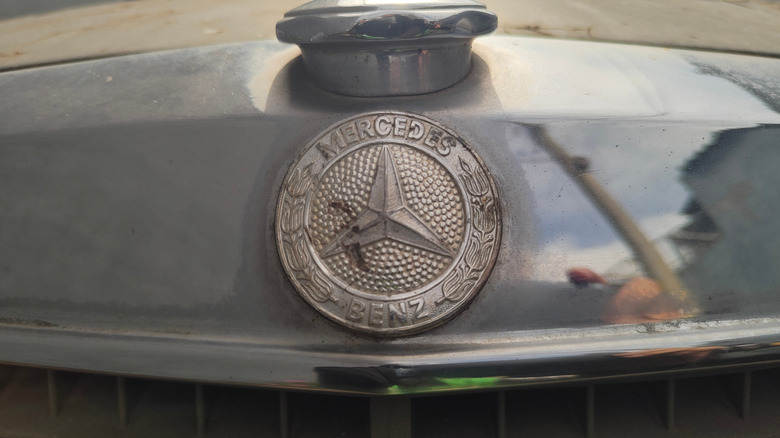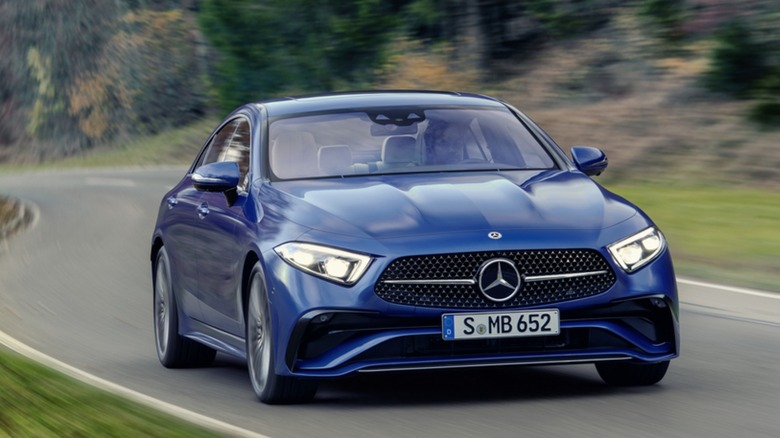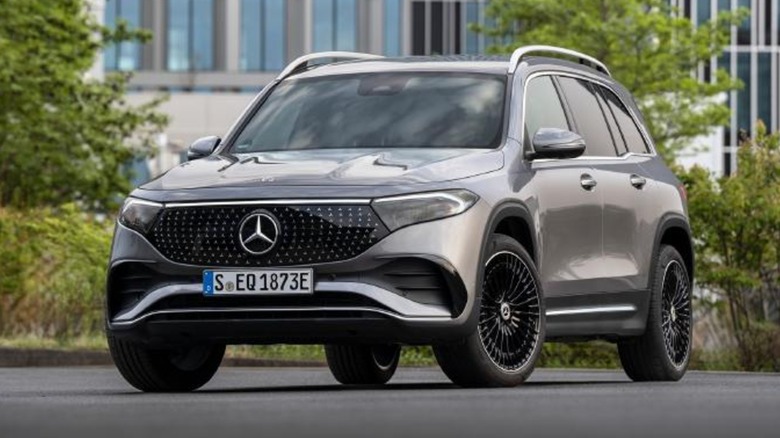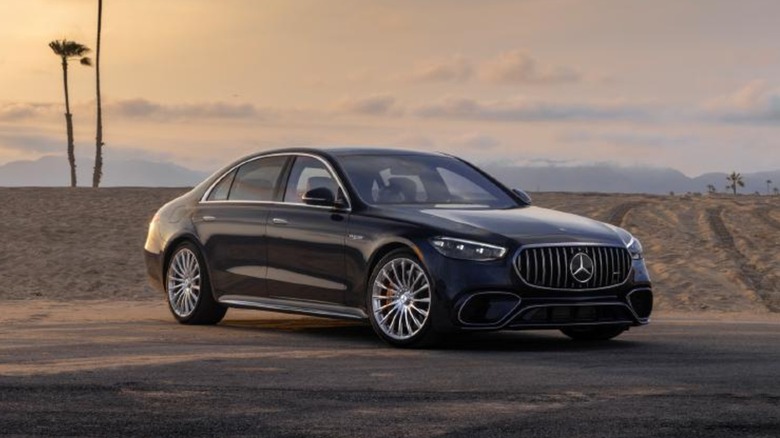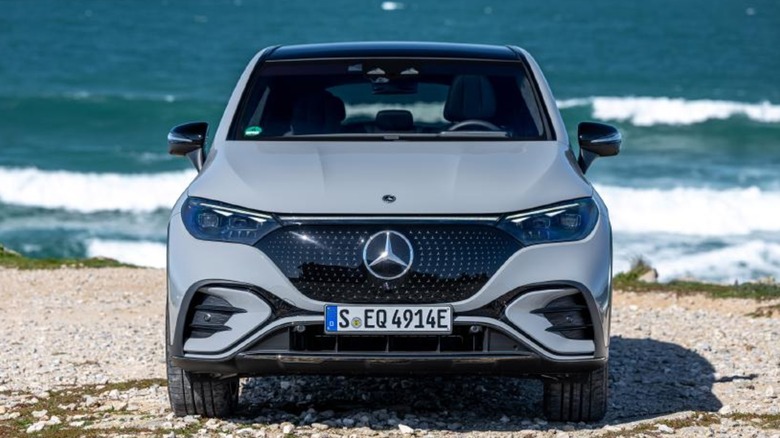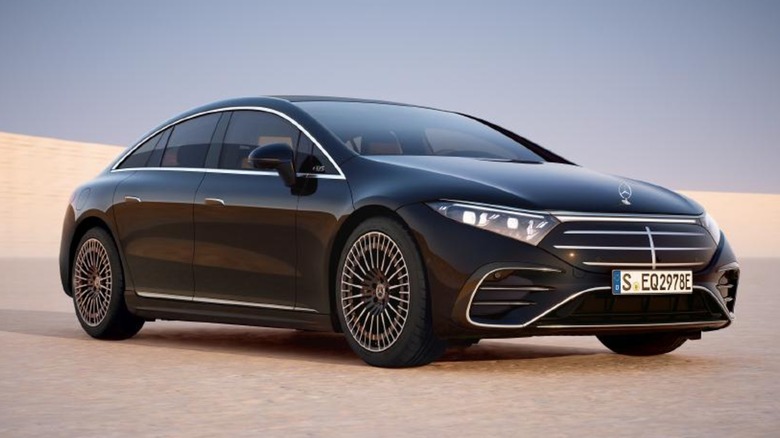5 Mercedes-Benz Models With The Worst Resale Value
Mercedes-Benz is considered a luxury brand, which means its vehicles are generally more expensive and extravagant. As you might expect, this also means that any lower-than-average resale values will deal an even heavier blow to their overall cost. Losing 50% of a cheap SUV's original cost will only mean you lose around $10,000 to $20,000, but to a Mercedes-Benz SUV, that same percentage could mean a loss of nearly $50,000. At that point, it's all too obvious why you'd want to be wary of the brand's worst-valued models.
Although you can find resale value estimates for various Mercedes-Benz models from iSeeCars, CarEdge, and Kelly Blue Book, these sources all have a wide range of variance in their guesses. Because of this, you might not have the easiest time pointing out which vehicles are truly the lowest-valued on your own. Still, there are five in particular you should try and be wary of — on top of more infamous used Mercedes-Benz models you should steer clear of at all costs.
CLS
The Mercedes-Benz CLS should give you a good idea of what to expect from this brand's depreciation and what it means for each model. After 5 years, you could expect it to retain only around 42% of its value, which already isn't a great start. It unfortunately gets worse when you look at its 2023 model's base price of over $77,000. You could buy a brand-new Ford F-150 with the money it loses over that period. Even though this isn't even close to the absolute worst resale value a Mercedes-Benz model could have, the CLS shows how unforgiving these depreciation rates can be to luxury brands.
It doesn't help that Mercedes-Benz CLS production came to an end in 2023. The brand has many different models available today, and one reassurance it gave customers was how well similar sedans — like the EQS — could fill the niche originally taken up by the CLS. You could argue over whether they were successful in doing so, but it shows the difficulty this vehicle has in finding an audience. If you plan on reselling one such model yourself, you might have a tough time reaching out to that audience, too.
EQB
The EQB is a newer vehicle from the Mercedes-Benz lineup, thanks to its 2022 introduction. It acts as the brand's oldest currently available electric SUV model with the exception of the G-Class. It also happens to be the cheapest EV from the company, with a base price of just around $53,000 plus a $1,150 destination fee. It's still a very high price, but compared to the CLS, that lower cost helps alleviate the blow of its retained value, ranging from depreciation of 47% to almost 38%. A difference of over $20,000 can really influence just how damaging these percentages are, even if the EQB is a few points lower.
Some would argue that Mercedes has only just gotten serious about mainstream EVs, but the EQB's relatively welcoming cost makes it a strong contender for the secondhand market. Sellers won't lose quite as much money as most of the other vehicles on this list, and buyers will be able to enjoy luxury features at a much cheaper price. Everything else you'll find on this list is much more expensive, which should help put the meaning of worst value into perspective.
S-Class
It should come as no surprise that the S-Class made its way onto this list. We previously highlighted it as one of 10 new cars you'll regret buying when it's time to sell, and its status unfortunately hasn't changed much since then. Even at its absolute best, it will only hold around 48% value after 5 years, with that number dipping into the low-40s or high-30s depending on who you ask. Just like with the CLS, the reason this depreciation is so damaging is due to the original price of the model itself.
Today, a brand-new S-Class Mercedes costs around $117,000. If you go for its special Maybach variant, that amount jumps to an unbelievable price north of $200,000. At that point, you would be losing a tenth of one million dollars if you decided to resell the car in 2030. Both buyers and sellers would be better off steering clear of this model unless they're more concerned with tossing around ludicrous amounts of money than going for the best value.
EQE
The EQE isn't very far from the EQB, though it comes in both sedan and SUV versions. Interestingly, the SUV is more likely to have better value than the sedan, retaining anywhere from around 47% to 35% of what it originally went for. Meanwhile, the sedan can keep as much as 48% of its value, but it can also drop as low as around a flat 30%. You might end up having to take a risk with the final pricing, depending on which body style you prefer.
Luckily, the EQE isn't far from the EQB in terms of cost, and that goes for both the sedan and SUV. Even if you're selling it for the lowest percentage, you're still losing less money than what would be taken out of the S-Class. It has the second-worst resale value of any Mercedes-Benz model available today, and yet it's still not the worst choice as a used vehicle to buy or sell.
EQS
While it's an electric vehicle with sedan and SUV styles like the EQE, the EQS is closer to the Mercedes-Benz S-Class in many ways. On top of its price scraping the $100,000 mark in both body types, it ends up with the worst possible resale value of any model from the brand, with around 33% for the SUV and a staggeringly low 27% for the sedan. The latter also happens to be the more expensive option, which arguably makes it the absolute worst choice for resellers.
The oldest model for the EQS came out in 2022, so you might argue that its resale value could still end up better than it seems after 5 five years. But it was already estimated to lose almost 50% of its value after just one year, dropping more quickly than any of its competitors. Since it's a luxury EV, as well, that just makes its percentage loss even more harrowing. Even if you just want to sell what you've purchased as fast as possible, the Mercedes-Benz model with the worst value could still end up losing enough money to pay off multiple cars at once.
